Osmosis DEX Fee Calculator
Estimated Transaction Costs
Enter values and click calculate to see estimated fees
Base Fee
$0.03
Typical Osmosis Swap FeeCross-chain Fee
$0.01
IBC Transfer CostTotal Est.
$0.04
Per SwapFee Information
Osmosis charges a flat fee of ~$0.03 per swap with minimal price impact. Cross-chain transfers add approximately $0.01. These fees are significantly lower than Ethereum-based DEXs (~$10-$30) and BSC (~$0.15-$0.30).
Key Takeaways
- Osmosis is the leading DEX for the Cosmos ecosystem, offering IBC‑enabled cross‑chain swaps.
- With about $150million TVL in 2025, it trails Ethereum giants but dominates Cosmos liquidity.
- OSMO token powers governance, fee discounts, and liquidity incentives; price volatility remains high.
- Getting started only requires a Cosmos‑compatible wallet (e.g., Keplr) and a few OSMO or ATOM for fees.
- Regulatory risk is low on paper but the lack of formal oversight may deter institutional users.
What is Osmosis?
Osmosis is a decentralized exchange (DEX) built for the Cosmos ecosystem that uses an automated market maker (AMM) model and the Inter‑Blockchain Communication (IBC) protocol to enable cross‑chain swaps. Launched on October52021, the platform was designed to be the liquidity hub for Cosmos SDK blockchains, offering a smooth user experience that rivals traditional centralized services.
Core Features & Technical Overview
The engine behind Osmosis is a classic AMM, but it adds two Cosmos‑specific twists:
- Weighted liquidity pools: Liquidity providers can set custom asset weights, allowing non‑50/50 pool configurations that better reflect market demand.
- IBC compatibility: By leveraging the Inter‑Blockchain Communication (IBC) protocol, Osmosis can move tokens between independent Cosmos chains without intermediaries.
These features translate into lower transaction fees-typically a few cents compared with $10‑$30 gas on Ethereum-and near‑instant settlement times (under a minute on most chains).
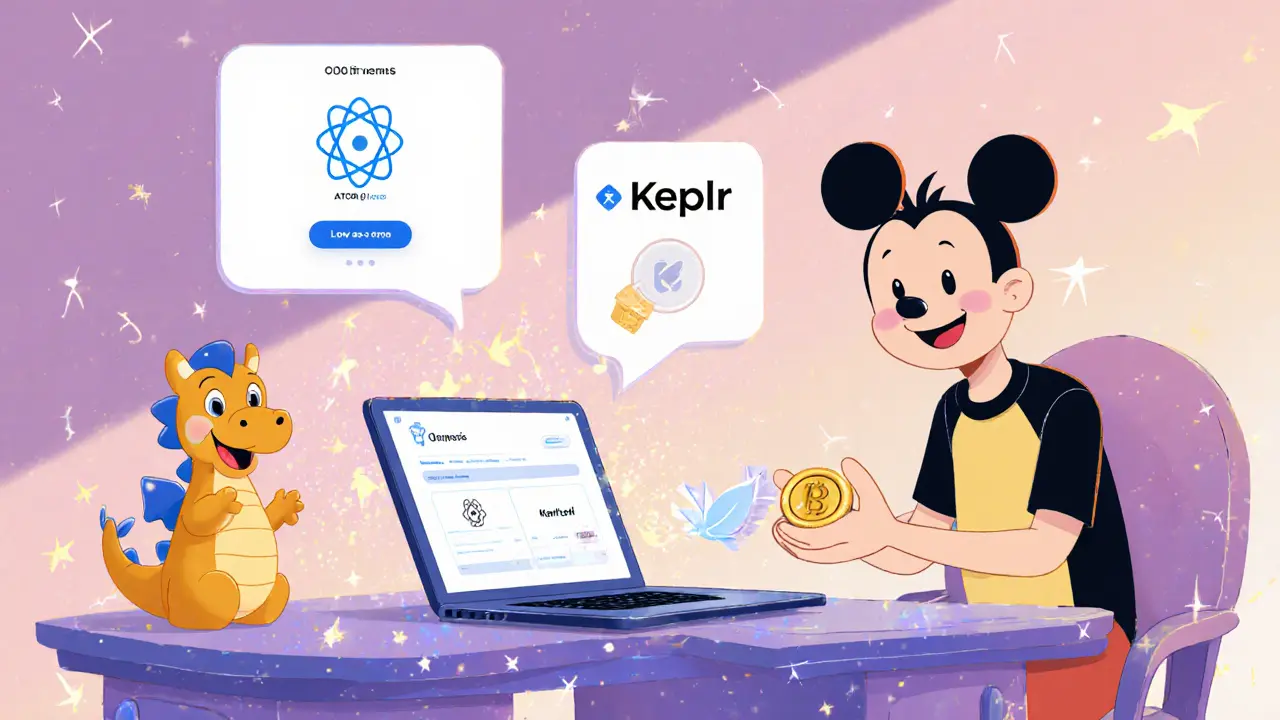
OSMO Token: Utility, Governance, and Price History
OSMO is the native governance and utility token of Osmosis, used for fee discounts, liquidity incentives, and voting on protocol upgrades. Since its launch at $5.12, OSMO has seen a wild ride: an all‑time high of $11.21 in March2022, a trough of $0.68 in June2022, and a current price hovering around $0.20 (late2025). The token’s price often mirrors broader DeFi sentiment, but governance participation remains strong-Osmosis consistently ranks as the most active Cosmos chain for monthly proposals.
Token holders can stake OSMO to earn a share of swap fees and to influence key decisions such as fee structures, new pool parameters, and roadmap priorities.
How to Trade on Osmosis (Step‑by‑Step)
- Install a Cosmos‑compatible wallet. The most popular choice is Keplr, which plugs directly into most browsers.
- Fund the wallet with a few ATOM or OSMO tokens to cover transaction fees (≈0.02OSMO per swap).
- Navigate to app.osmosis.zone and click “Connect Wallet”.
- Select the pool you want to trade (e.g., ATOM/OSMO), input the amount, and review the estimated price impact.
- Confirm the swap. The transaction will be signed in Keplr and settled via IBC within seconds.
- If you want to earn fees, click “Add Liquidity”, choose a pool, and deposit your assets. You’ll receive LP tokens that represent your share of the pool.
The interface is praised for its clean design and real‑time analytics, making the learning curve moderate for users familiar with basic DeFi concepts.
Strengths, Weaknesses, and How Osmosis Stacks Up
Below is a quick side‑by‑side comparison of Osmosis against three major DEXs that dominate other ecosystems.
| Feature | Osmosis | Uniswap (Ethereum) | PancakeSwap (BSC) | Curve (Multi‑chain) |
|---|---|---|---|---|
| Primary Ecosystem | Cosmos SDK | Ethereum | Binance Smart Chain | Multi‑chain (mainly stablecoins) |
| TVL (≈2025) | $150M | $4B+ | $2B+ | $4B+ |
| Avg. Transaction Fee | $0.02‑$0.05 | $10‑$30 (gas) | $0.15‑$0.30 | Varies (often $0.03‑$0.10) |
| IBC / Cross‑Chain Support | Native (IBC) | Via bridges (riskier) | Via Binance Bridge | Multiple bridges |
| Governance Participation | Monthly on‑chain voting (high turnout) | Weekly proposals (moderate) | Quarterly updates | Quarterly updates |
| UX Rating (community polls) | 9/10 - praised for design | 7/10 - functional but clunky | 6/10 - basic | 7/10 - finance‑focused |
**Strengths**: IBC integration, low fees, customizable pools, strong governance, and a UI that many users rate among the best in DeFi.
**Weaknesses**: Smaller TVL means less depth for large trades, limited token selection outside the Cosmos universe, and no formal regulatory oversight, which could limit institutional adoption.

Security, Regulatory, and Risk Assessment
Osmosis operates as a fully on‑chain protocol-there’s no custodial entity that can be hacked. Smart‑contract audits have been performed by reputable firms (e.g., PeckShield) and no major exploits have been reported to date. The platform’s decentralised nature also means it’s not registered with any financial regulator, a fact highlighted by FxVerify. While this aligns with the ethos of DeFi, it does raise two practical concerns:
- Regulatory uncertainty: Without a legal entity, it may be difficult for large investors to obtain compliance approvals.
- Smart‑contract risk: Users rely on the code staying bug‑free; a future vulnerability could affect all funds.
Mitigation strategies include using hardware wallets for key storage, diversifying across multiple DEXs, and keeping only the amount needed for a trade on‑chain.
Community, Development Activity, and Future Outlook
Osmosis boasts one of the highest development activity levels among Cosmos projects. Monthly releases introduce new pool types, fee models, and UI tweaks. Community sentiment is overwhelmingly positive-users love the holiday‑themed UI updates and the vibrant governance discussions. The recent listing of OSMO on Binance signals mainstream acknowledgment and could bring fresh liquidity.
Looking ahead, the platform’s growth hinges on three factors:
- Expansion of the Cosmos ecosystem: More blockchains adopting IBC will feed more assets into Osmosis.
- Bridge improvements: Better cross‑chain bridges could let Osmosis attract non‑Cosmos tokens, widening its market.
- Regulatory clarity: If DeFi‑specific frameworks emerge, Osmosis may need to adapt to stay compliant while preserving decentralisation.
Even with these variables, the consensus among analysts is that Osmosis will remain the primary liquidity hub for Cosmos, especially as more DeFi products (e.g., lending, synthetic assets) build on top of its AMM infrastructure.
Frequently Asked Questions
Is Osmosis safe to use for large trades?
The platform’s smart contracts have passed multiple audits and no major hack has occurred, but the $150M TVL means large orders can cause noticeable price impact. Splitting trades or using limit orders (via third‑party aggregators) can reduce slippage.
Do I need OSMO to trade on Osmosis?
You only need a small amount of OSMO (or any supported token) to cover transaction fees. Holding OSMO gives you fee discounts and voting rights, but it isn’t mandatory for basic swaps.
Can I provide liquidity with assets from different blockchains?
Yes, as long as the assets are IBC‑compatible and have an existing pool on Osmosis. The IBC protocol moves tokens across Cosmos chains, enabling cross‑chain liquidity provision.
How often does governance happen?
Governance proposals are posted continuously, with voting periods typically lasting 7‑14 days. Monthly snapshots of voting participation show Osmosis as the most active Cosmos chain.
What are the main risks of using Osmosis?
Key risks include smart‑contract bugs, limited token diversity, and regulatory uncertainty due to the protocol’s decentralized nature. Users should only allocate funds they can afford to lose and stay updated on governance proposals.
Overall, Osmosis offers a compelling mix of low fees, IBC‑driven cross‑chain capability, and a user‑friendly interface that makes it the go‑to DEX for anyone building or trading within the Cosmos ecosystem. If you’re comfortable with a modest learning curve and want to explore a fast‑growing DeFi sector, give Osmosis a try.
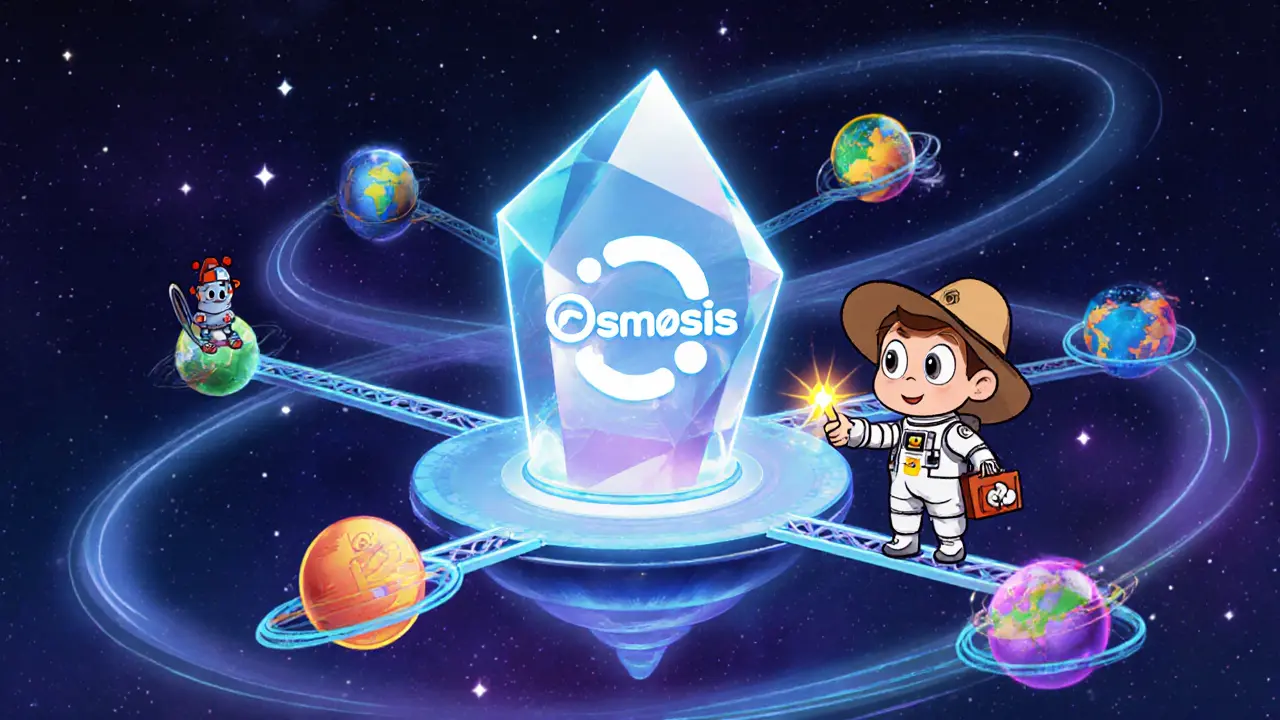

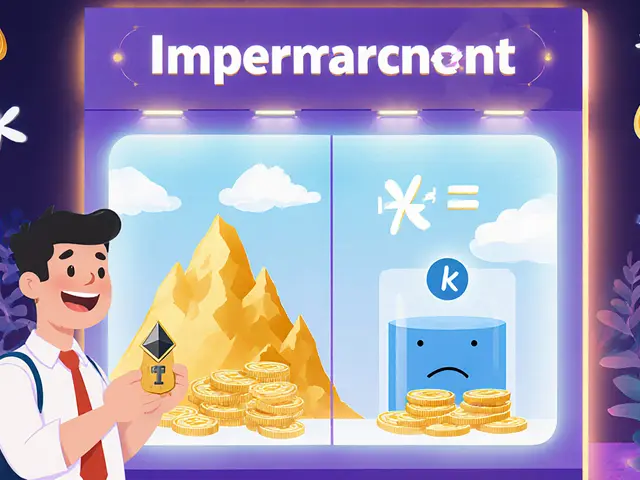
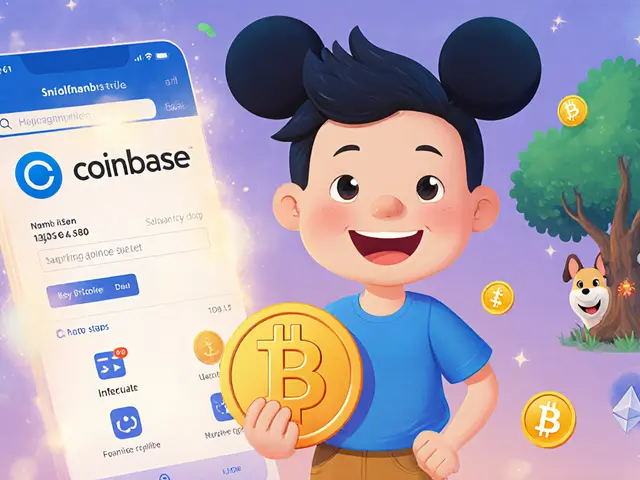

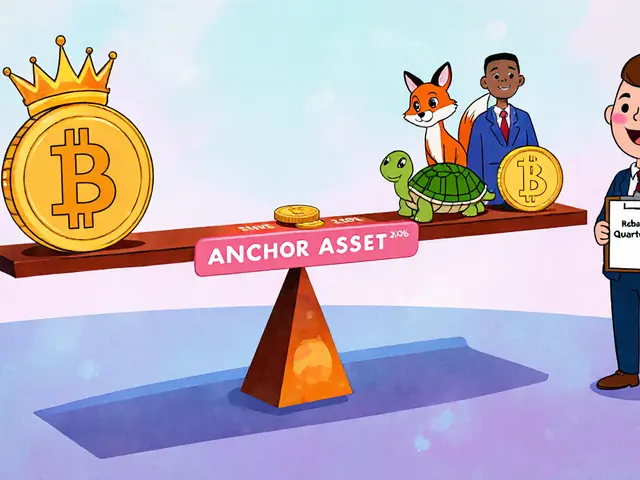
Joseph Eckelkamp
Osmosis is basically the Swiss Army knife of DEXes-low fees, IBC magic, and UI that doesn’t make you want to stab your screen. But let’s be real: $150M TVL? That’s not a liquidity hub-it’s a puddle next to Ethereum’s ocean. And don’t get me started on the OSMO price-$11 to $0.20? That’s not volatility, that’s a rollercoaster built by a toddler with a vape pen. Still… I’ll take it over Uniswap’s $25 gas fee any day. 🤷♂️
Jennifer Rosada
While the technical architecture of Osmosis is undeniably elegant, one must critically evaluate the absence of regulatory compliance as a non-trivial systemic risk. The protocol's decentralized nature, while philosophically aligned with libertarian ideals, renders it legally ambiguous under U.S. securities law, particularly in light of the Howey Test. Institutional capital will not flow into an environment where fiduciary duty cannot be assured. One cannot, in good conscience, recommend this platform to clients without explicit disclaimers regarding counterparty risk and regulatory exposure.
adam pop
They’re all lying. Osmosis is a front. IBC isn’t real-it’s just a fancy way of routing through Binance’s backdoor. You think you’re trading on a decentralized exchange? Nah. You’re feeding your crypto into a black box that feeds the Fed’s blockchain surveillance program. The ‘audits’? Paid for by the same VC firms that own Keplr. And OSMO’s price drop? That’s not market correction-that’s a kill switch being tripped. Wake up. They want you to think you’re free while they track every swap.
Dimitri Breiner
If you’re new to DeFi and scared of gas fees, Osmosis is your golden ticket. Seriously-$0.02 swaps? That’s a gift. The UI is clean, the IBC integration is smooth, and the governance is actually active-which is more than you can say for 90% of other chains. Don’t let the naysayers scare you. Start small, add liquidity to ATOM/OSMO, stake your tokens, and watch how the ecosystem grows. This isn’t just a DEX-it’s the backbone of the next-gen blockchain economy. You don’t need to be a genius to use it. You just need to start.
LeAnn Dolly-Powell
I just did my first swap on Osmosis and I’m OBSESSED 😍 The whole process took like 45 seconds and I didn’t cry once! The UI is so pretty and the fact that I can trade ATOM for OSMO without paying $15 in gas? Pure magic. 🌈✨ I even added liquidity and got my first LP rewards-felt like winning a tiny crypto lottery! If you’ve been scared to try a DEX, this is the one to start with. You got this!! 💪💖